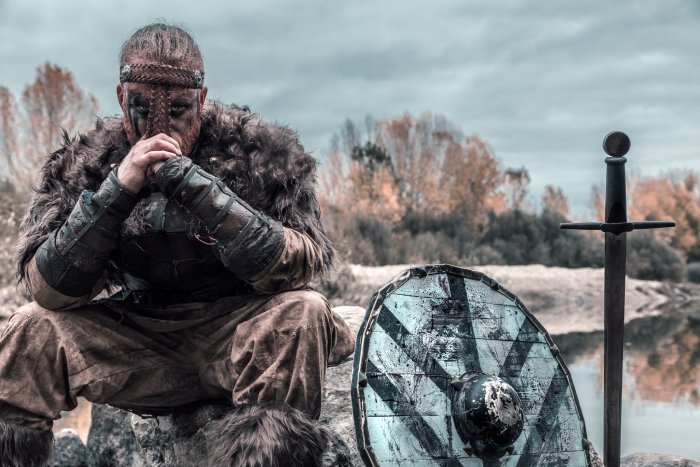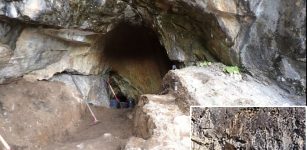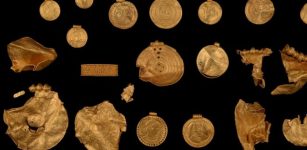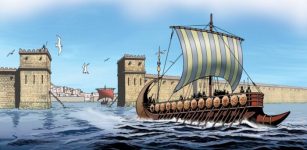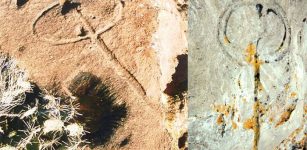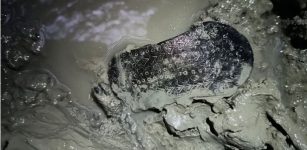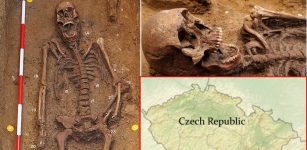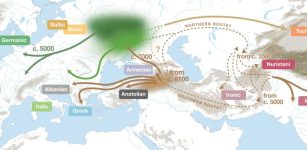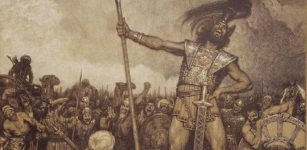Something Never-Before-Seen Is Hidden Beneath 15 Giant Viking Burial Mounds Spotted By Radar In Norway
Jan Bartek - AncientPages.com - Norwegian archaeologists have good reason to be excited about this latest discovery. With help of ground penetrating radar device scientists have discovered 15 giant Viking burial mounds. One of them may contain a boat grave!
In recent years, scientists have learned to appreciate the benefits radar can offer when searching for ancient structures. Ground penetrating radar (GPR) sends electromagnetic signals down into the subsurface, and some of these signals are reflected back when they encounter structures deeper down in the ground. This is how archaeologists obtain a kind of X-ray of objects two to three meters below the surface.
What Viking secrets are hidden beneath the ground? Credit: Sergio - Adobe Stock
There are many examples how ancient Viking treasures have been spotted thanks to the latest radar technology. As previously reports, a high-resolution georadar has detected traces of a ship burial and a settlement that probably dates to the Viking Period at Edøy in Møre and Romsdal County in Norway.
The discovered ship-shaped anomaly near other Viking burial mounds in the Borre Park in Vestfold county, southeast of Oslo can give us more clues about Vikings.
But there is still so much more we can and should learn about Viking history. Unfortunately, it’s very difficult to find a boat grave.
Viking Ship Burial Are Rare And Difficult To Find
Ancient Viking funeral traditions and rituals were very complex. Viking burials were intended to be a spectacular ritual. Viking funeral traditions involved burning ships and complex ancient rituals.
The type of burial a Viking received depended on his importance in society. When a Viking died he could either be buried or burned. Ship burial was reserved for great Viking warriors. The ultimate goal for every Viking warrior was to enter Valhalla, the kingdom of the great Norse god Odin.
There are less than ten ship burials dating from the Viking Age (800-1050) in Europe. Is it possible we have now found a new one in Bodø municipality we can add to the list?
“The results are astonishingly good and they whet your appetite for more, says Nordland county archaeologist Martinus A. Hauglid.
Our findings included traces of 15 burial mounds, and one of them appears to contain a boat grave. Both the size and design of the burial mounds are typical of the period 650 to 950 CE—that is, what we call the Merovingian Period and Viking Age," says Stamnes.
"A lot of the mounds are big. The largest burial mound has an inner dimension of 32 meters and must have been a towering presence in the landscape," he says.
Findings included traces of 15 burial mounds. The size and design of the burial mounds are typical of the period 650 to 950 CE. Click on the image for a close-up view. Credit: NTNU University Museum
In fact, this giant mound is one of the largest burial mounds known in the region. But this isn't what aroused the greatest enthusiasm among archaeologists. Previous studies indicated the presence of a plowed over burial ground right here, and this was an important reason why Bodø municipality and the Nordland County Council wanted to investigate the area with GPR.
What they didn't know beforehand was that an ever-so-small mystery lurked underground. Or perhaps we should say many mysteries.
Something That Has Not Been Seen Before
It’s still unknown what hidden beneath the ground but it’s something that has not been seen before. As many as 32 oval ditches appear on the radar screen. What could these structures be?
Stamnes says he has asked his colleagues, but they have never seen anything like this before.
"The shape and the fact that most of the ditches have a clear orientation with the short end towards the sea—probably also the dominant wind direction—make it likely that this was a type of house foundation," he said.
He adds that the GPR images do not show any traces of buried firepits inside the ditches, which indicates that they might have had a more temporary function.
Viking Burial Rituals: High Ancient Funeral Pyre Reflected High Social Status - Read more
"Maybe they served as a kind of market stall. It's also possible to interpret such constructions as semi-permanent house foundations, also called "búðir", which are known from assembly places in Iceland.
At the moment, it's not possible to say anything more definitive about what the oval ditches are until excavations have been made.
However, the idea they might be stalls connected to larger crowds gathering on the site is fascinating archaeologist Jørn Erik Henriksen at the Norwegian Arctic University Museum says.
The GPR surveys also revealed 1257 pits of various sizes. It's even harder to say for sure what all these are. Most likely they're a bit of everything—from cooking pits and post holes to nothing special.
"What we can say is that these pits are another sign that this area has been packed with human activity," says Stamnes.
Seat For Chiefdom?
According to some theories, the area around the earlier Bodin municipality—including the scanned areas—was once the seat of a chiefdom that had sovereignty in the Salten district.
So the question is: does the archaeological investigation confirm this hypothesis?
Henriksen says he'd like to see similar investigations done at other contemporaneous central sites in the area before uncritically proclaiming this as the power headquarters.
"However, the findings have in no way weakened the hypothesis that this place was the center of power in Salten, on the contrary!" he says.
A Mighty Family
In any case, there is little doubt that a powerful family lived here, based on the size and number of the tombs gathered in one burial ground. Eight of the burial mounds are circular in shape, while seven are oblong. Long mounds are often interpreted to be female graves, so judging by the numbers, the burial ground contains an even gender balance.
"Five of the round grave monuments have a diameter greater than 17.5 meters, where the largest measures about 32 meters. The long mounds are between 17.7 and 29 meters long," Stamnes says.
"Building such large tombs is resource-intensive, so it's plausible that the people buried here had great power and influence, both locally and regionally," he says.
County archaeologist Hauglid agrees.
The scanned area as seen from above. Previous studies indicated the presence of a ploughed burial ground right here. Credit: www.norgeibilder.no
"Bodøgård was the seat of the sheriff—and later the county governor—in the Nordland region from the beginning of the 17th century, while Bodin church nearby is a stone church from the Middle Ages. The burial ground that has now been discovered testifies that a political-religious power center has existed here since the Late Iron Age.
See also: More About Vikings
"A new city quarter has given us the chance to explore an area we've long been curious about. We can even see from aerial photos that there's something under the ground. The findings from the investigation have yielded a long-awaited and exciting mystery," says Ingrid Nøren, the manager for the New City—New Airport project in Bodø municipality.
It's a fascinating archaeological discovery and we can hopefully soon learn more about what's hidden beneath the ground.
Written by Jan Bartek - AncientPages.com Staff Writer

